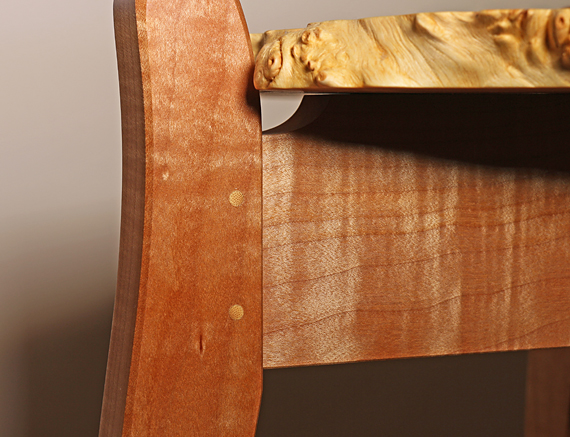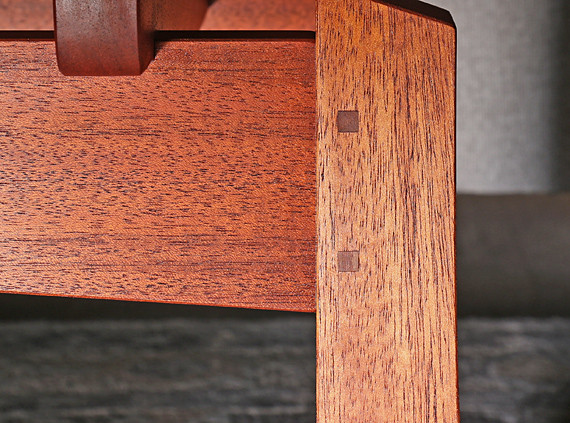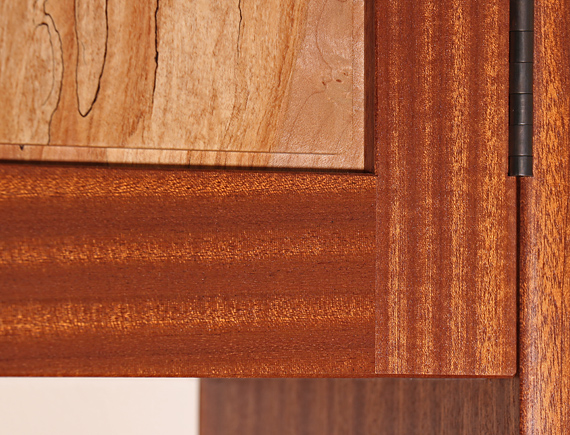
Maybe. It depends.
The idea is to make the joint “stronger.” But stronger how?
In ballistic and gradual load tests reported in magazines, the M&T joint does not usually fail by the tenon withdrawing, which is mostly what a peg is designed to prevent. Rather, it is the mortise wall or the tenon itself that gives out first. Pegs can and usually are shown to weaken the mortise wall, and probably also the tenon itself. So, pinning does not seem to strengthen the joint against this type of destruction.
A few qualifications are in order. Most tests are done on frame M&Ts. However, in leg-and-apron M&Ts, there is more wood around the mortise and the result may well be that pins are a net benefit in strength.
Also, this discussion refers to glued furniture-sized joints, not timber framing joints. Also, I am not referring to draw boring. In my opinion, this technique has limited use in furniture making unless it is needed to circumvent having to use very long clamps, and even then there are alternatives such as Universal Wedgegrip clamps.
I think that for most furniture, and based on decades of observing my own constructions, the joints will hold up either way. Probably the biggest threat is abruptly shoving or dragging a loaded table across a floor on which the bottom of a leg catches. Also, there is always the risk of abusive handling during house moving. Chairs are a different matter.
But what about slow degradation of the M&T? There, I think a properly placed peg can help keep the tenon shoulder tight against the mortise member as the inherent dimensional conflict may work to create a seasonably variable gap at the shoulder line. Certainly, there are several factors in what happens: the joint dimensions, the flexibility of the glue line, wood species, grain orientation, joint fit, seasonal humidity stress, and more.

And as a practical matter, aesthetic preferences often decide the matter.
Still, I think there is value to pinning the M&T in some cases, particularly when I want to hedge my bets against gaping at the shoulder line. In practice, I have found that it helps. I am more inclined to pin a leg-and-apron M&T than a frame M&T. Maybe luck is a bigger factor than I know.
If I am going to pin the joint, I am careful where I place the pin(s). The goal is to have most of the movement of the tenon cheek against the mortise wall occur in the part of the tenon deep to the pin, where it will not create a gap at the shoulder. If the pin is too close to the shoulder, there will not be enough mortise wall for strength. If the pin is too far from the shoulder, that defeats its purpose.



I am trying to save a solid maple desk that is self destructing do to several issues. One issue it has is tongue and groove panel glue-ups with not enough glue and to much grain hinge.
The other is nailed mortise and tenon joints that either are impossible to get apart by simple releasing the glue or both the glue gives out and the nails breakout the tenon!
While I realize whoever built the desk thought the pinned mortise and tenon joints would be stronger, they obviously were not thinking of the need for repair in the future. I almost wish they had use dowels, because at least they would be easier to get out.
I do like the way they look when pegged. I also like to think that my pieces, if well made, will outlive me. In theory, in a couple of hundred years, the glue will fail and then the pin will be a mechanical way to keep the joint tight. I certainly won’t be around by then but I like to think I’ve fixed a far in the future problem. Probably too far in the future but I think about it.
Thanks for the comments.
Joe,
It seems to be commonly accepted that “the glue will fail.” Do we really know that? Is it likely? I do not know but I hope not. I wonder what the chemists at Franklin would say about PVAs. And we have centuries of experience with hide glue – the bonds last.
Rickg,
I’m not sure what you mean regarding the frame-and-panel issues in the desk. Regarding the cross-nailed mortise and tenon joints, I suspect the joints failed long ago and the nails are a repair job. Perhaps try withdrawing the nails and repairing the joints. If hide glue was originally used, remember that hide glue sticks to itself (unlike PVAs). If you cannot reglue the joints, maybe try rebuilding them with loose tenons. Good luck.
Rob